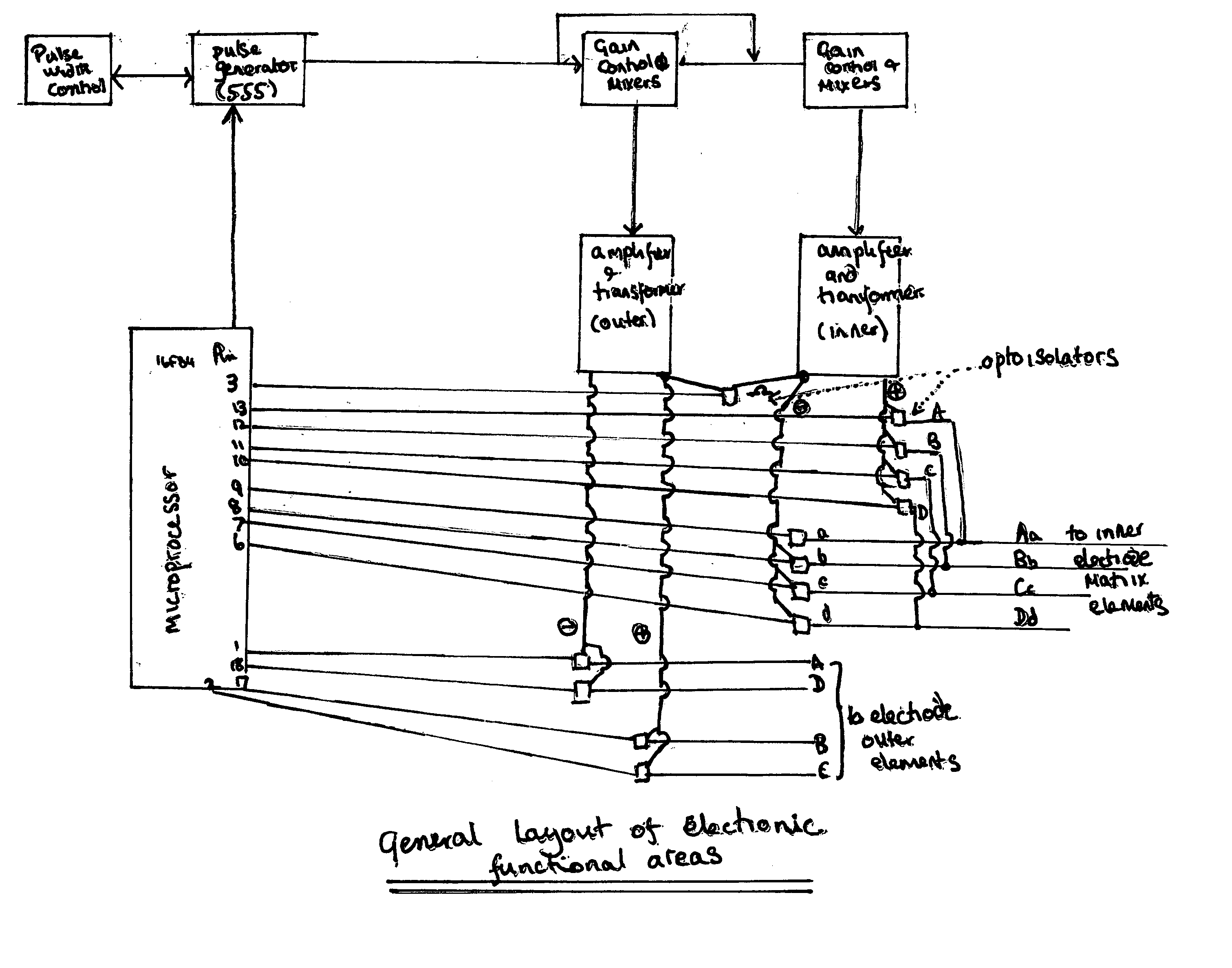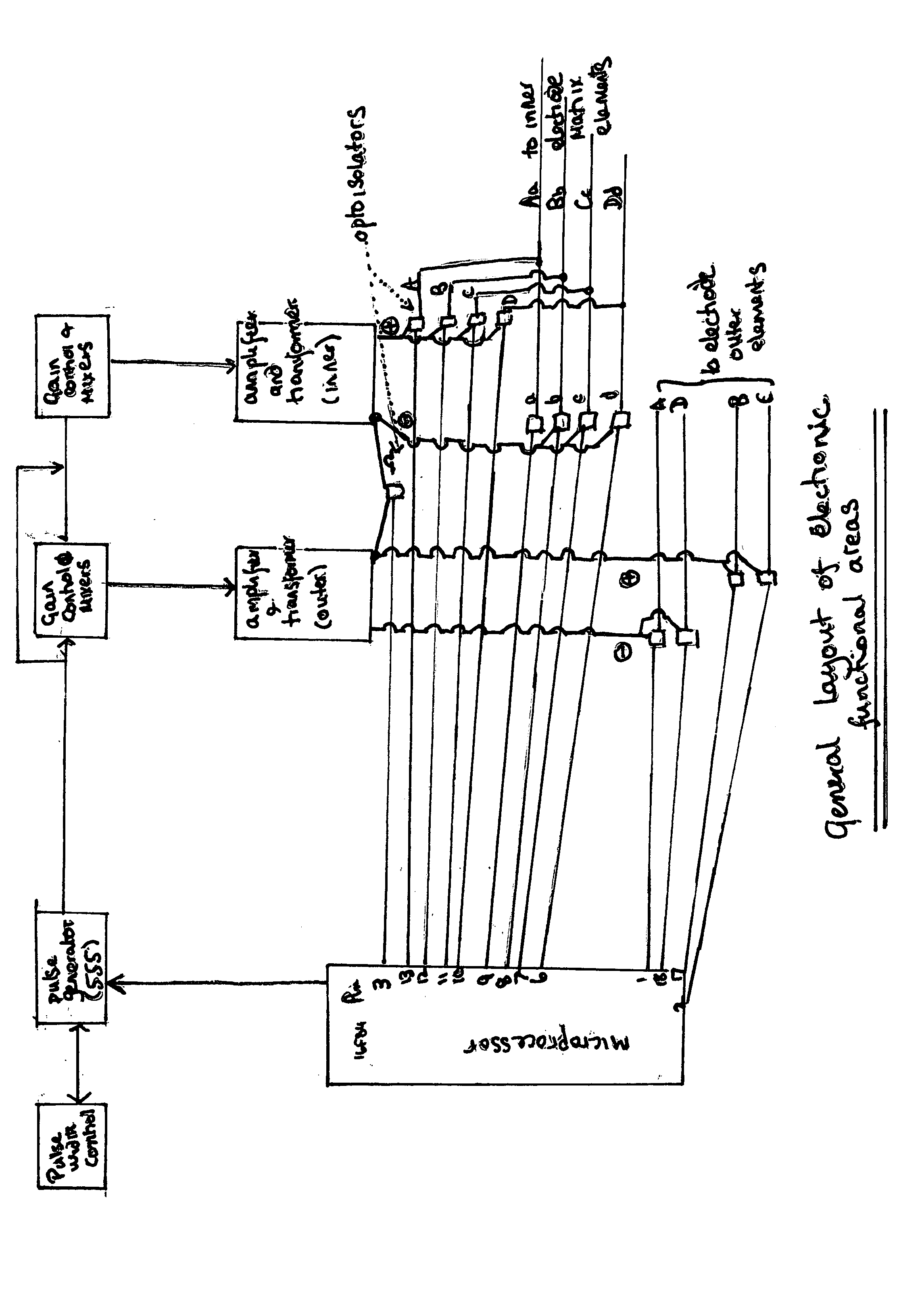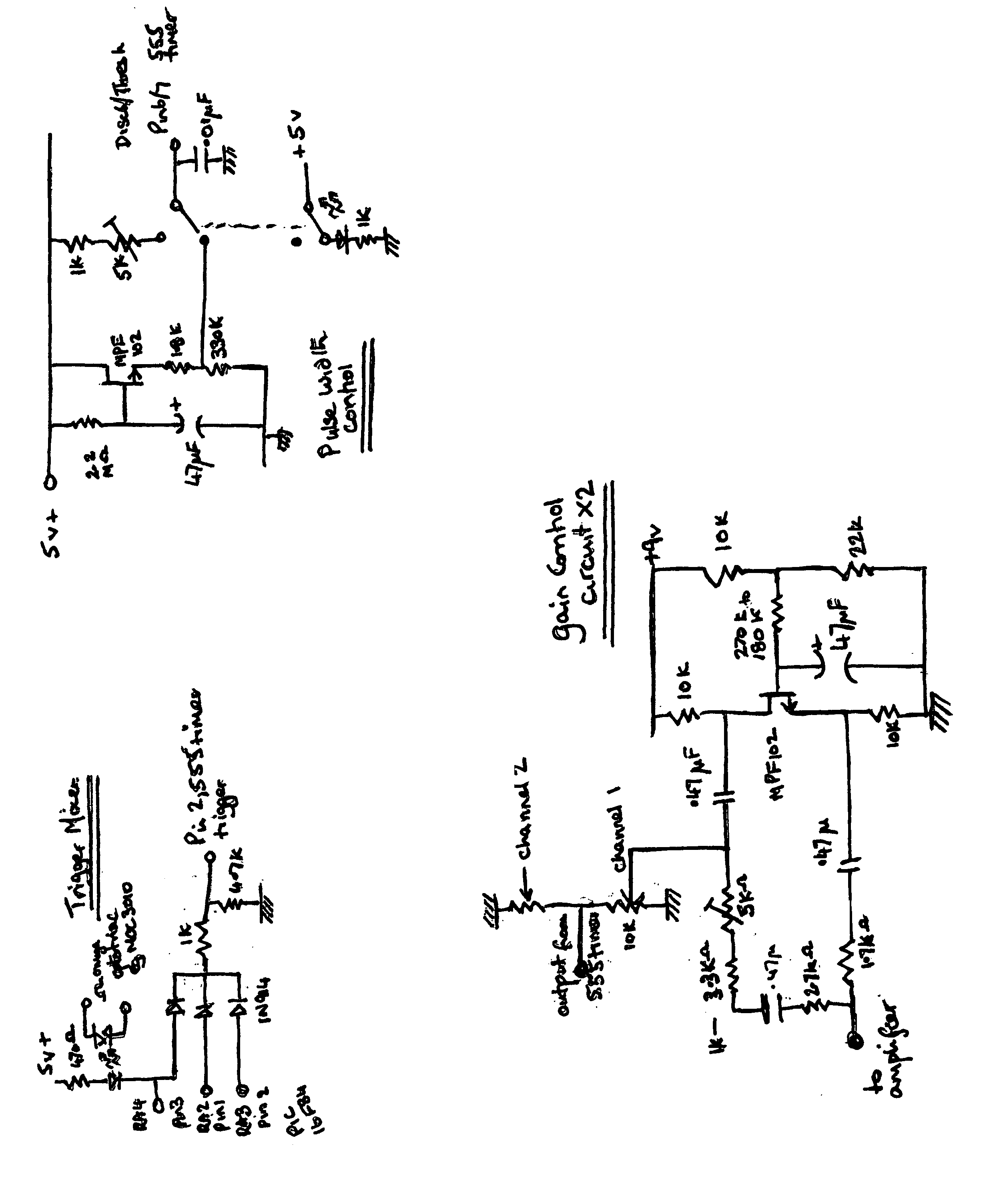Enhanced device for diminishing or eliminating the pain caused by superficial therapeutic injection or superficial body tissue sampling or the pain from a superficial injury as well as for the reduction of hemorrhage from an injured area
a technology of enhanced devices and injections, applied in the field of therapeutic injections, can solve the problems of electrodes used, difficulty or inability to recognize the timing of sharp sensations, type of tens generating and control units, etc., and achieve the effect of reducing or eliminating pain on skin breach, reducing the tendency for deeper and wider tissue stimulation, and reducing overall signal strength
- Summary
- Abstract
- Description
- Claims
- Application Information
AI Technical Summary
Benefits of technology
Problems solved by technology
Method used
Image
Examples
Embodiment Construction
[0012] The over arching strategy employed in this invention rests on two main insights. First the current embodiments of TENS device are not optimized for the anatomical location of nerves within the skin or the local intensity of exposure required for significant local blockade.
[0013] Secondly, nature builds in a great deal of redundancy in all its systems including to communication. For example in written communication the well known sentence “if u cn rd the msg . . . ” clearly indicates the redundancy of information communicated in a correctly spelled sentence. The same strategy of reliability through the use of redundancy is true of the various biological systems of the body with generally over capacity of each system and adjunctive but none essential activity in each system. Thus the same message sent by multiple routes (nerve fibers) can accommodate some noise in each route but the combined central message arrives adequate for clear interpretation. In the peripheral nervous s...
PUM
 Login to View More
Login to View More Abstract
Description
Claims
Application Information
 Login to View More
Login to View More - R&D
- Intellectual Property
- Life Sciences
- Materials
- Tech Scout
- Unparalleled Data Quality
- Higher Quality Content
- 60% Fewer Hallucinations
Browse by: Latest US Patents, China's latest patents, Technical Efficacy Thesaurus, Application Domain, Technology Topic, Popular Technical Reports.
© 2025 PatSnap. All rights reserved.Legal|Privacy policy|Modern Slavery Act Transparency Statement|Sitemap|About US| Contact US: help@patsnap.com



